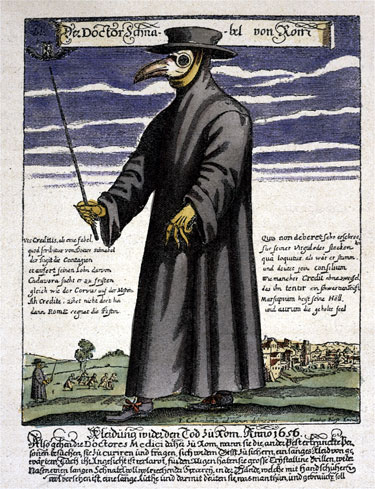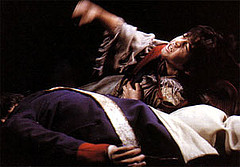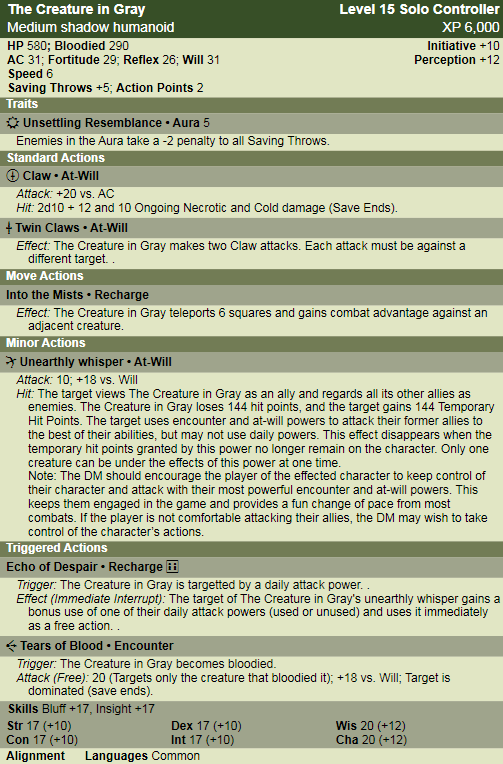I was one of those who obsessively read previews and developer blogs in the leadup to 4e. There was one post – I wish I could find it now – about how, in 3e and previous editions, utility spells and combat spells were mixed together, which meant that utility spells got the shaft. For instance, if you have a choice between memorizing Detect Secret Doors and Magic Missile, you’re probably going to choose Magic Missile – the one useful in combat. In 4e, they made a distinction between attack powers and utility powers. I think this was a great idea – as far as it went.
A suggestion for Fifth Edition, guys! A distinction between combat and utility/noncombat is direly needed in feats. The Linguist feat is notoriously untakeable, because there’s always something you could take instead that would improve your combat build. Sure, you can always choose to make a substandard combat build in pursuit of your character concept, but I don’t think you should have to make that choice.
D&D is focused on combat. Combat is where the rules complexity is. (Skill challenges are the first attempt ever at adding rules complexity and structure to noncombat scenes, and it’s still nowhere near the complexity and structure of combat.) Combat is where the real potential for failure and death is. (Failure in a skill challenge, we are told repeatedly, does not stop the adventure: it adds complication, often in the form of extra combat.) Combat is where we get competition and high stakes – the “us vs the DM” part of the game – in other words, the game part of the game.
Combat is both where players have the most actual power over the outcome, and where the stakes are highest. A party can win or lose a combat. A single combat ability or feat can make the difference between an enemy dead or alive, resources spent or kept, and victory and TPK.
Outside of combat, PC abilities – even noncombat abilities – are less important. In railroad-style adventures (a perfectly legitimate and a very common adventure structure), the PCs can do something if the DM wants them to do it, and can’t if the DM doesn’t. There may be some skill checks as window dressing, but it’s mostly for show. In sandbox or player-directed campaigns, the dice are often put aside for long stretches and the DM makes a lot of judgment calls based on the logic of the situation. Rarely do player abilities – their overland travel speed, say, or their History checks – visibly tip the balance between failure and success in the adventure. (But a good DM tries to give the impression that they do.)
Therefore, asking players to choose a noncombat feat over a combat feat is unfair. You’re asking them to give up a concrete benefit in the heavily structured part of the game in exchange for a benefit of uncertain value in the freeform part of the game, which often comes down to little more than character flavor. It’s a choice between roll-play and role-play, which is (or should be) a false dichotomy.
A lot of 4e feats try to offer a balance: they give you a noncombat ability, and because they know that noncombat isn’t enticing enough, they sweeten the deal with a small combat bonus.
Some examples:
Light Step, which increases your overland travel speed and the difficulty for opponents to follow you – cool stuff you could probably use in a skill challenge – and you get 2 points added to skills. Prerequisite: elf. Compare it to Skill Focus, which gives you +3 to skills.
Wild Senses, which gives you a large bonus for tracking creatures, and +3 to initiative. Prerequisite: shifter. Compare to Improved Initiative, which is +4 to initiative.
Animal Empathy: Bonus to Insight checks against natural beasts, and +2 to Nature skill. Prerequisite: Trained in Nature. Compare to Skill Focus: Nature, which is +3 Nature.
You aren’t giving up much combat ability by taking these feats, but you are giving up some. In my opinion, you shouldn’t have to give up any. By creating the Light Step feat, you are saying that a bonus to tracking and overland movement is worth +1 Initiative. You shouldn’t ever have to compare these – they are in different spheres.
I have two possible fixes:
Solution 1: Feats That Do Two Things
Make good combat feats – not watered-down feats, but feats just as good as combat-only feats – that also provide a noncombat ability. For instance, make the Wild Senses Initiative bonus just as good as Improved Initiative.
You could actually have several feats, each of which provided +4 feat bonus to Initiative, and gave different noncombat bonuses. Players could choose whichever one fit best with their conception of their character.
Or, if you don’t want to totally eliminate Improved Initiative, you could do what all the feats I mentioned above did: have a prerequisite. All of the cool noncombat-ability versions of Improved Initiative could require a certain race, attribute, or skill training. If you don’t qualify for any, you can always take Improved Initiative.
It’s not always easy to see how to combine combat and noncombat abilities. What combat advantage would you tie with Linguist?
Solution 2: Combat and Utility Feats
Divide feats into combat and utility feats. At some levels, you get one, and at some, the other. As with powers, combat feats would predominate.
It might be hard to police this. Someone would always find some wacky ability that lets your Intuition check be used as an attack roll, or something, and then a bunch of supposedly-noncombat feats would become combat-useful. Still, I think it would be a reasonable approach.











